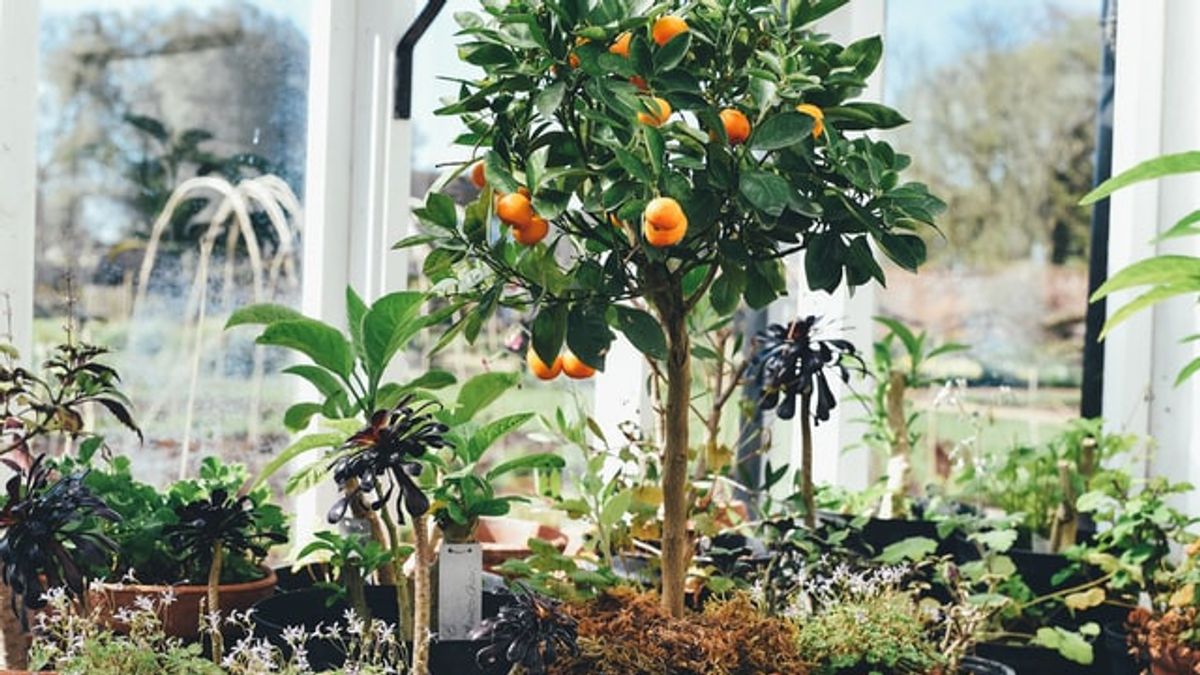JAKARTA – Tabulampot stands for fruit plants in pots. Planting plants that bear fruit and then being able to use the fruit for consumption at home can be done easily. Of course, you need a complete and brief guide on how to plant tabulampot.
In order to quickly bear fruit, the selection of fruit plants, seeds, planting media, pot size, fertilization and care, this is the explanation.
1. Choose the type of tabulampot plantThere are various types of fruit plants in pots to choose from. The most common types of fruit include water guava, mango, lime, sapodilla, star fruit, avocado, guava, rambutan. Can also plant one-season crops such as watermelons, strawberries, melons.
Besides choosing the type, you also need to choose the character of the plant according to where it is planted. If you are in the lowlands, which tend to be hotter than the highlands, choose plants that are more flexible.
2. Choose tabulampot seeds correctlySeedlings from seeds are not recommended for tabulampot. Because seed plants take a long time to bear fruit. In order for tabulampot to bear fruit quickly, choose seeds that are propagated vegetatively, such as the results of grafting, grafting, and grafting.
3. Use the right planting mediaFruit plants in pots do not take up much space. However, it is necessary to consider the size of the pot, ranging from 50 to 100 liters. If the plant is rather large, then choose a large pot as well.
Type of planting media, can use soil. In order to be fertile and loose, it can be mixed with husk charcoal. The pots are also more varied, ranging from plastic pots, polybags, used drums, planter bags, stone pots, and clay pots.
4. FertilizationReported by the official website of the Department of Agriculture of Mojokerto Regency, the need for nutrients and nutrients for tabulampot media must be sufficient. Fertilization needs to be done regularly in the form of fertilizing macro nutrients (N, P, and K) as well as micro nutrients such as Ca, Mg, and S.
In addition to being given fertilizer regularly, it is also necessary to give additional supplements that function to stimulate growth and fruiting.
Supplements can be in the form of organic fertilizers that do not emit residue, such as organic compost. Liquid supplements can also be added and sprayed every 2 weeks.
5. Set the location to account for the light intensityNot every type of tabulampot plant likes high sun intensity. There are plants that thrive in shady locations. But there are also plants that have the opposite character. So identify the plant you choose so that you can measure and adjust the location of placing the pot.

Treatment is carried out to check plant growth, flowering to fruiting phases, avoiding pests, regular pruning, stem trimming, and water stress.
Pest checking, can be done at least every two days. While regular pruning is only done to reduce the leaves that are old. Then, the cutting of the trunk or tree trunks serves to stimulate the tabulampot to bear fruit quickly.
Stem trimming is only done during the harvest season. And lastly, doing water stress is to reduce the intensity of watering with the aim of reducing the growth of new shoots that are too massive and stimulate flowering trees.
Water stress or watering intensity can be done every 10 days. This method is done every 3 months after doing it can be watered as usual.
The English, Chinese, Japanese, Arabic, and French versions are automatically generated by the AI. So there may still be inaccuracies in translating, please always see Indonesian as our main language. (system supported by DigitalSiber.id)








